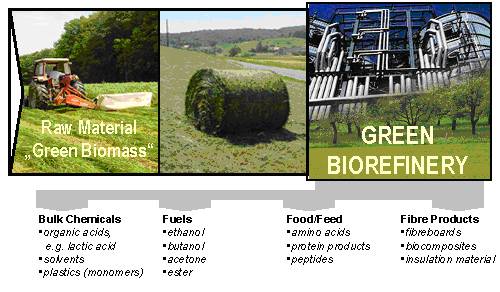Researchers from the University of Ghent are using bacteria to turn grass into chemicals for bioplastics and biofuel. Could this process be scaled up to fuel planes?
A grass bioconversion project is being developed at the Centre for Microbial Ecology and Technology (CMET) of the University of Ghent, and it has recently taken an important step forward. It has finally reached biofuel production out of grass, as researcher Way Cern Kohr describes in his doctoral thesis. While the process is still far from industrial production, the numbers at lab scale show promising efficiency.
Grass is abundant and relatively cheap, making it a candidate for sourcing second-generation sugars and avoid the use of food crops. While grass doesn’t seem to match the buzz around converting wood residues, there are some ongoing projects of “green biorefineries” using grassland.

On a first level, the goal of CMET’s process is to transform the grass into lactic acid, an intermediate chemical that is in high demand. Last year, the researchers published on Applied Microbiology and Biotechnology their first results. After a physical pretreatment, the grass was fed to bacteria to be fermented into lactic acid. These bacteria are a mixed culture, containing Lactobacillus, reducing the need for sterile fermentation and hence lower the costs. Unlike with engineered strains in synbio, this process relies on the natural bacterial capacity to produce lactic acid and optimizes it by tinkering with the fermentation conditions.
Lactic acid is then useful for a number of applications, the most famous of which may be as a precursor for the popular bioplastic polylactic acid (PLA). But lactic acid can also be converted to capric acid, a molecule with a chain of 10 carbons, which can in turn be converted to decane. Decane is currently a component of gasoline and could be used, with modification of engines, as aviation fuel. In this way, the research is already targeting the fuel segment that is most likely to stay around, even if electric cars are adopted massively.
With the achievement of the first drops of “grassoline”, researchers are now looking into optimizing the process in cooperation with the business world. It’s a long haul process. For example, the French biofuel company Global Bioenergies was founded in 2008, when it started working on a lab scale prototype. Now, after nine years and a €6.6M IPO, it’s finally moving to a demo plant, the last step to commercialization.
Images from Andrey tiyk/Shutterstock and Nachhaltigwirtschaften/BMVIT





